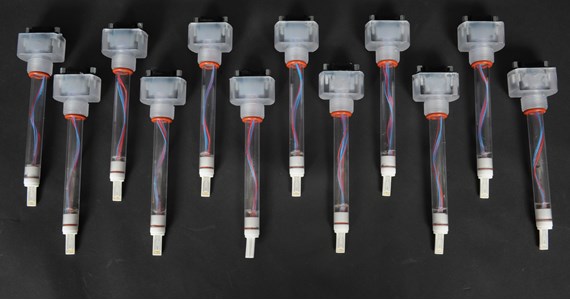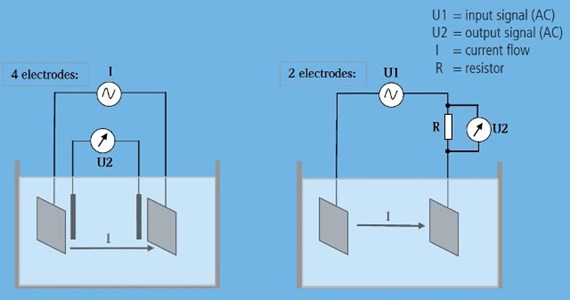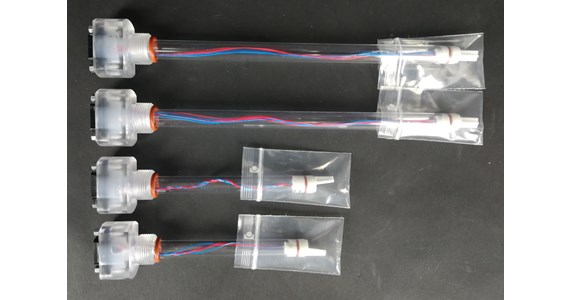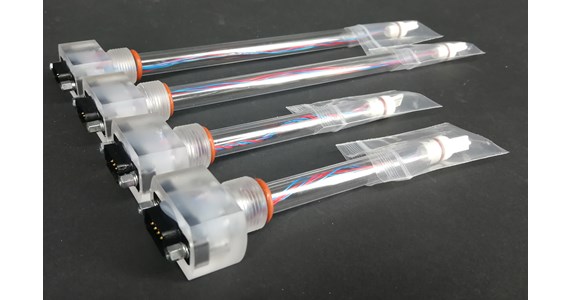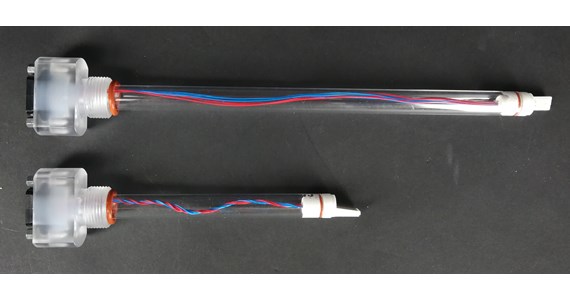Why 4-wire ConducCell is better
The ConducCell high precision 4-wire conductivity sensor is on demand pre-installed in SUB / SUF products before bagging and subsequent E-beam irradiation. Available in size PG 13.5 x 120, 220, 320 and 400 mm.
Conductivity sensors measure the ability of a solution to conduct an electrical current. It is the presence of ions (salinity concentration) in a solution that allow the solution to be conductive. The greater the concentration of ions, the greater the conductivity.
In general a 4 electrode sensor is much more accurate than the 2 electrode sensor setup.
- ConducCell operating range: 1~200 mS/cm
- Integrated temperature sensor: Pt1000 class C
- Response time (t90%): < 1 min
- Operating range: 10 - 60°C
- Sizes: PG13.5 x 120, 220
- Connector: D-Sub male 9 leg
- K value: 1.7
An alternating voltage is applied to two electrodes. This causes the ions in the solution to move back and forth between the electrodes, creating a current which is measured by the two other electrodes and converted to the conductivity measurement. This type of sensor is very good for measuring low conductivity solutions with few solid particles that could collect around the electrodes and interfere with the measurement, e.g., pure water.
Conductivity is measured in Siemens per cm (S/cm). A conductivity of 1 S/cm is quite high, so most conductivity measurements involve solutions where conductivity is measured in mS/cm (thousandths of a S/cm). Drinking water is generally between 50 and 1500 μS/cm.

